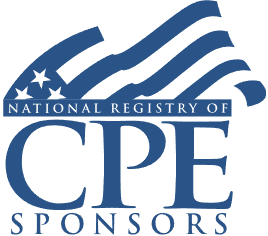Calculating Trust Accounting Income Under Uniform Principal and Income Act and Uniform Fiduciary Income and Principal Act

Welcome! Strafford is now BARBRI! The expert courses you know from the trusted global leader in legal education.
Course Details
- smart_display Format
On-Demand
- signal_cellular_alt Difficulty Level
Intermediate
- work Practice Area
Tax Preparer
- event Date
Wednesday, August 21, 2024
- schedule Time
1:00 p.m. ET./10:00 a.m. PT
- timer Program Length
110 minutes
-
BARBRI is a NASBA CPE sponsor and this 110-minute webinar is accredited for 2.0 CPE credits.
-
BARBRI is an IRS-approved continuing education provider offering certified courses for Enrolled Agents (EA) and Tax Return Preparers (RTRP).
This course will provide tax advisers and compliance professionals with an in-depth exploration of the fiduciary income calculations and determinations contained in the Uniform Principal and Income Act (UPIA). The panel will detail how to apply UPIA provisions to differentiate between corpus and income and identify trust provisions that can create challenges in allocating trust accounting income (TAI) under UPIA terms.
Faculty

Mr. Gadarian's practice focuses on tax strategy, estate planning and asset protection law. Previously, he was a Legislation Attorney on the staff of the Joint Committee on Taxation, U.S. Congress. Before that, he was an Attorney-Advisor to Judge Cynthia H. Hall of the U.S. Tax Court. He is the former Arizona State Chair of the American College of Trust and Estate Council, and is an Adjunct Professor at the University of Arizona College of Law.

Ms. Schlereth advises clients regarding all aspects of taxation with a concentration in trusts and estates. Her areas of expertise include, but are not limited to succession planning including estate and gift, trust, private foundation, individual, small businesses, and investment partnerships. She is also responsible for high net worth families' business, individual, trust, foundation, and gift tax returns.
Description
Advisers preparing trust income tax returns face the initial challenge of calculating TAI, the amount generally available to the income beneficiaries of a trust or estate. Calculating TAI depends on the trust operating instrument and state law. Virtually every state has adopted the UPIA to determine how to allocate the income and corpus of a trust in full or with changes.
The UPIA details the proper financial treatment of payment streams from various asset sources. The UPIA outlines the default treatment for capital gains, depreciation, and amortization. Absent a specific and permissible provision in the trust documents, most states default to UPIA treatment. This becomes critical in making distribution decisions before the filing of the tax return.
Trust accountants and tax advisers also need to identify the critical differences between UPIA fiduciary accounting principles and income tax treatment to avoid tax consequences and beneficiary challenges.
Listen as our experienced panel provides a broad and practical guide to mastering fiduciary accounting income beyond the basics.
Outline
- Importance of principal and income allocation and basics
- State adoption of UPIA and UFIPA
- Ordering rules
- Where a trust instrument may deviate from UPIA or UFIPA treatment
- UPIA Rules
- UFIPA Rules
- Capital gains allocated to income
- Power to adjust under UPIA
- UPIA provisions dealing with specific assets and payment streams
Benefits
The panel will discuss these and other essential questions:
- Default UPIA provisions on treatment of bond and financial instrument periodic income and sales proceeds
- Reconciling trust operating documents with UPIA provisions for TAI calculations
- Interpreting UPIA provisions in circumstances where operating documents are silent or inconclusive
- UPIA approach to timing and character of the distribution amount
NASBA Details
Learning Objectives
After completing this course, you will be able to:
- Recognize when a trustee has the power to adjust
- Establish the UPIA framework for determining principal and income in TAI calculations
- Differentiate between TAI and GAAP accounting
- Understand the UPIA approach to timing and character of distributions
- Interpret UPIA provisions in circumstances where operating documents are silent, inconclusive, or in opposition to UPIA provisions
- Field of Study: Taxes
- Level of Knowledge: Intermediate
- Advance Preparation: None
- Teaching Method: Seminar/Lecture
- Delivery Method: Group-Internet (via computer)
- Attendance Monitoring Method: Attendance is monitored electronically via a participant's PIN and through a series of attendance verification prompts displayed throughout the program
- Prerequisite: Three years+ business or public firm experience at mid-level within the organization, preparing complex trust and estate tax forms and planning; supervisory authority over other preparers/accountants. Some knowledge and understanding of fiduciary income calculations and determinations provided in the Uniform Principal and Income Act.

Strafford Publications, Inc. is registered with the National Association of State Boards of Accountancy (NASBA) as a sponsor of continuing professional education on the National Registry of CPE Sponsors. State boards of Accountancy have final authority on the acceptance of individual courses for CPE Credits. Complaints regarding registered sponsons may be submitted to NASBA through its website: www.nasbaregistry.org.

Strafford is an IRS-approved continuing education provider offering certified courses for Enrolled Agents (EA) and Tax Return Preparers (RTRP).
Unlimited access to premium CLE courses:
- Annual access
- Available live and on-demand
- Best for attorneys and legal professionals
Unlimited access to premium CPE courses.:
- Annual access
- Available live and on-demand
- Best for CPAs and tax professionals
Unlimited access to premium CLE, CPE, Professional Skills and Practice-Ready courses.:
- Annual access
- Available live and on-demand
- Best for legal, accounting, and tax professionals
Unlimited access to Professional Skills and Practice-Ready courses:
- Annual access
- Available on-demand
- Best for new attorneys
Related Courses
Recommended Resources
How CPE Can Bridge the Gap Between What You Know and What You Need to Know
- Career Advancement
